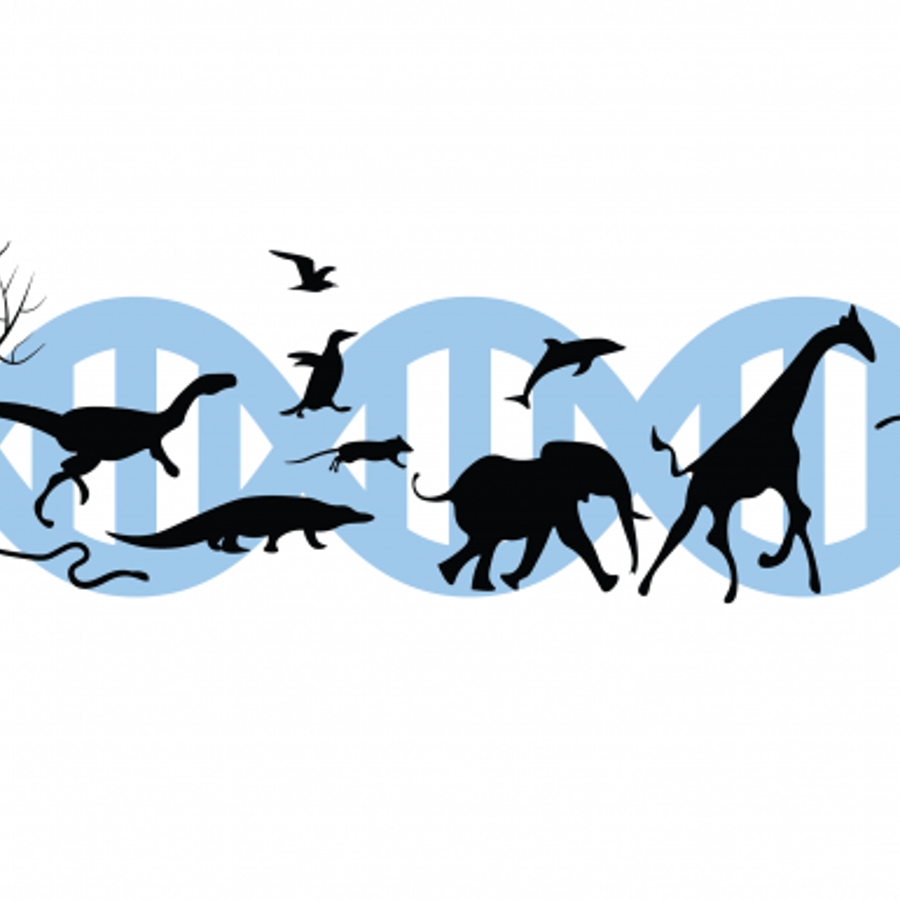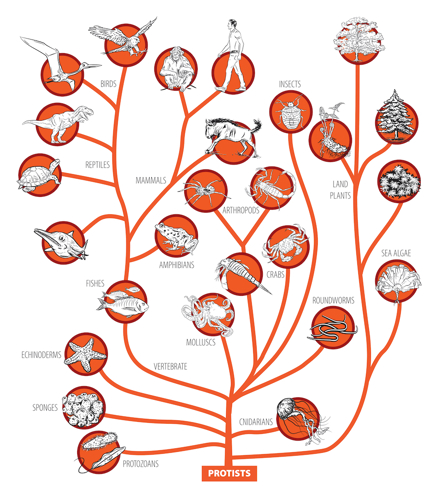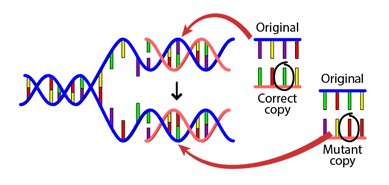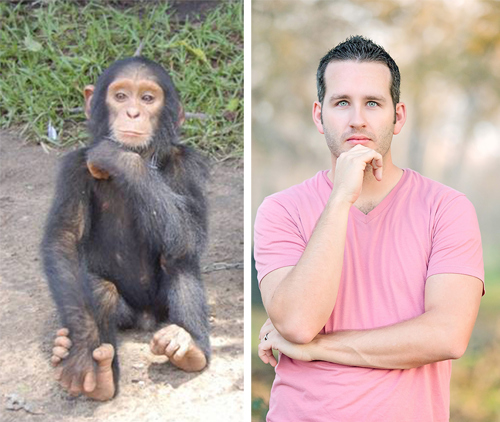
Why is it that we have almost the same DNA as other things?
May 1, 2009

- Related Topics:
- Comparing species,
- Mutation,
- Evolution
An elementary school student from California asks:
"Why is it that we have almost the same DNA as other things?"
This is a very interesting question and one that is fun to think about! There are three related reasons why our DNA is so similar to everything else's.
1) We share a common ancestor
The first reason is that we all came from a common ancestor. In other words, we all started out with the same DNA way back when. The different animals we see today are due to lots of small changes that have happened in living things since then.

2) Organisms that do similar things may need similar instruction manuals
The second reason has to do with what DNA does. And the fact that all living things have lots in common with each other.
DNA has the instructions for making a creature. This DNA is split up into many different sections called genes.
Each gene has a specific job. One gene might have the instructions for making something that carries oxygen in our blood. Another might have the instructions that give a person brown eyes.
No matter how different all living things may look, we all have things in common. Monkeys, people, lizards and frogs all need to breathe, see, move around, etc.
These common activities are the result of common genes. So creatures that have to do similar things will often share similar DNA.
3) Changes might break a gene
The third reason is that lots of genes can't be changed too much because many changes cause a gene to stop working. So these genes will stay the same (or very similar) in all living creatures.
These three reasons are why your DNA is 99% identical to a chimpanzee's. And it's 95% identical to a monkey's. And why you are about 79% identical to a mouse and even 36% identical to a little fruit fly!
In fact, you even do some things a bacterium does. You have a membrane enclosing your cells. And you both have to use oxygen and sugar to make energy. So your DNA is 7% identical to that bacterium!
But if we all started out with the same DNA, how did we end up with any differences at all? The short answer is evolution. Of course to understand this answer, we need to understand how evolution works.
DNA Changes from Generation to Generation
You may have heard that you get half your DNA from your mother and half from your father. But that means that your parents each had to copy their DNA in their egg or sperm before they could pass it on to you. Sometimes mistakes get made during this copying. These mistakes are called mutations.
The mistake might not have any effect, might be good for you or might be harmful. If the effect is harmful, it'll probably stay in your immediate family. It may not spread too far because the person who inherits the mistake may not be healthy enough to have kids.
If the mistake is neutral, it may or may not spread beyond your family. And if it is beneficial, it may eventually become common in the whole species.

Certain Changes are Selected For
So how can these changes spread beyond your family? And become common? Let's think about an imaginary animal to show how this might happen.
This animal looks a lot like a human, but it's very hairy, like a gorilla. Imagine this animal gets a mutation that makes it less hairy.
If the animal lives where it is very cold, it probably won't do as well as its hairier neighbors. So it will be sickly, not have as many kids and may ultimately die. And its mutation will die with it.
If the weather is mild, then being less hairy might not matter. Then you might end up with some hairy animals and some not so hairy animals.
But if the weather is hot, then the less hairy animal might do better. Maybe it can get out during the day when it is hot and get food that its hairier neighbors can't.
Now the less hairy animal is stronger and has more kids. Many generations later, the less hairy animal becomes more common. Eventually, the whole species is less hairy than before.
Evolution is Many Small DNA Changes Over a Long Period of Time
Evolution is a build up of many small changes in DNA like the less hairy one I just talked about. Over millions of years, lots of these changes can result in a big change in the animal.
Think again about our less hairy animal. Maybe later on, another DNA change made it so the animal could grow a bigger brain. If being clever helps this species, then this will become more common too.
Now one of our big-brained, less hairy animals gets a mutation that makes it easier to walk upright. This animal can now do great in tall grass and so can spread beyond the trees where it used to live.
And so on. With lots of changes like these, our hairy tree dwelling gorilla is now able to answer people's genetics questions! This is evolution.
Many small DNA changes are kept when they help the animal live better in its environment. Eventually there are enough changes that it is a whole new animal.
So remember, our DNA is so similar to other animals because we evolved from the same ancestor. And because all living creatures do many of the same things.


Author: Mark McElwain
When this answer was published in 2009, Mark was a Ph.D. candidate in the Department of Developmental Biology, studying WNT signaling in drosophila embryonic patterning in Roel Nusse's laboratory. Mark wrote this answer while participating in the Stanford at The Tech program.
 Skip Navigation
Skip Navigation
